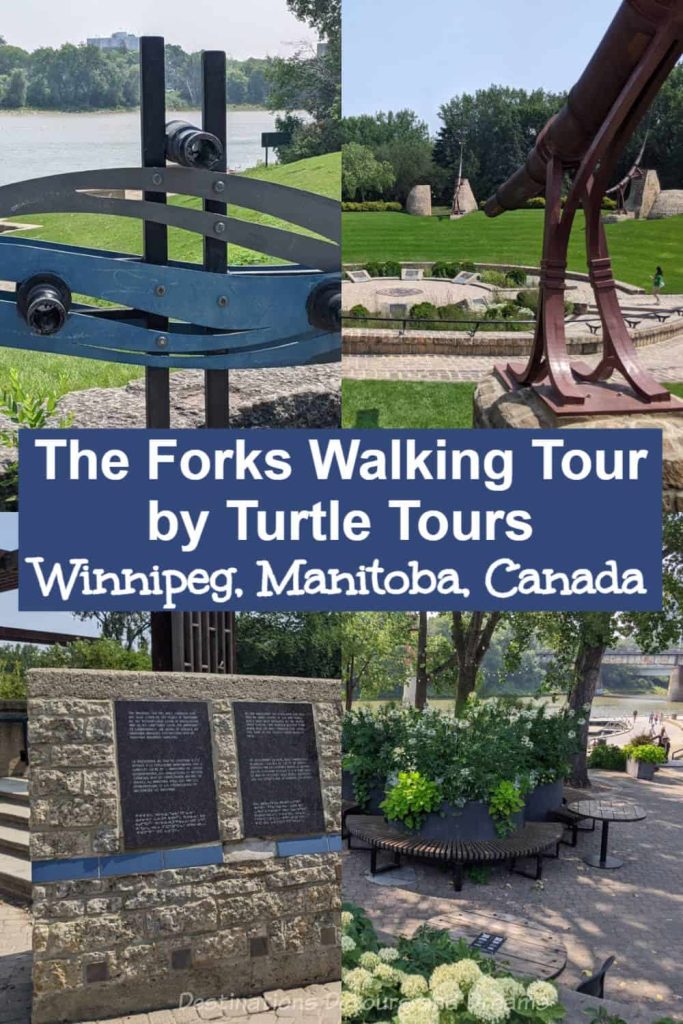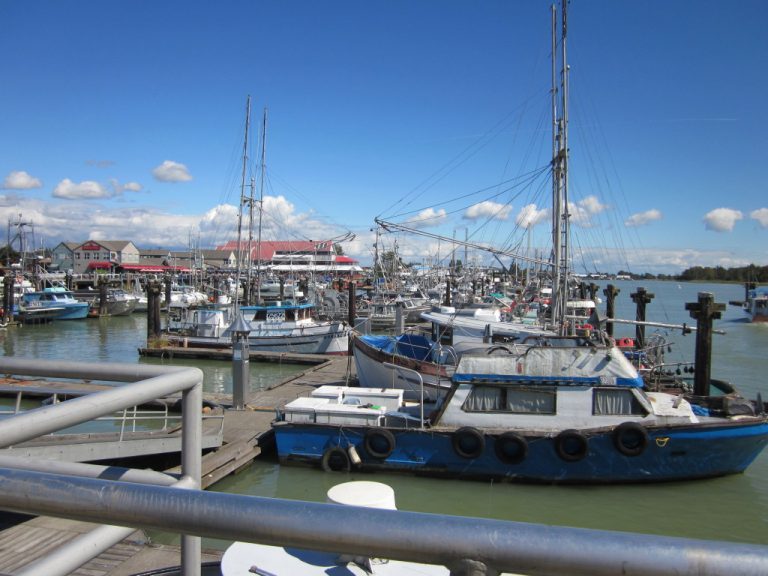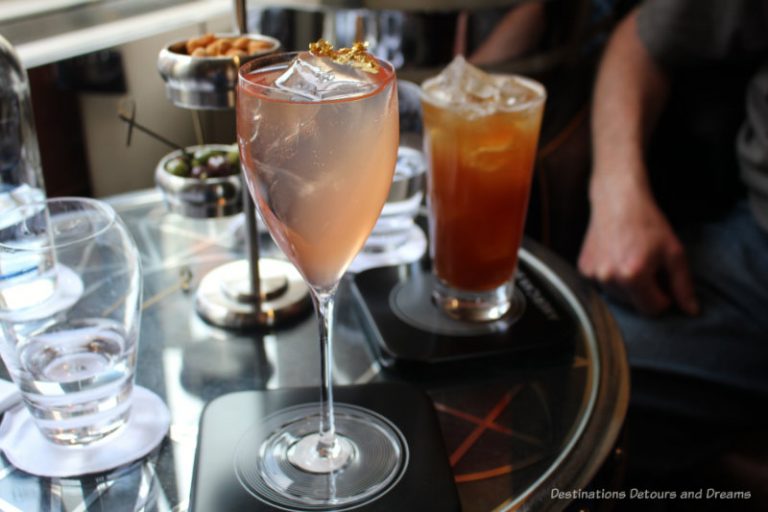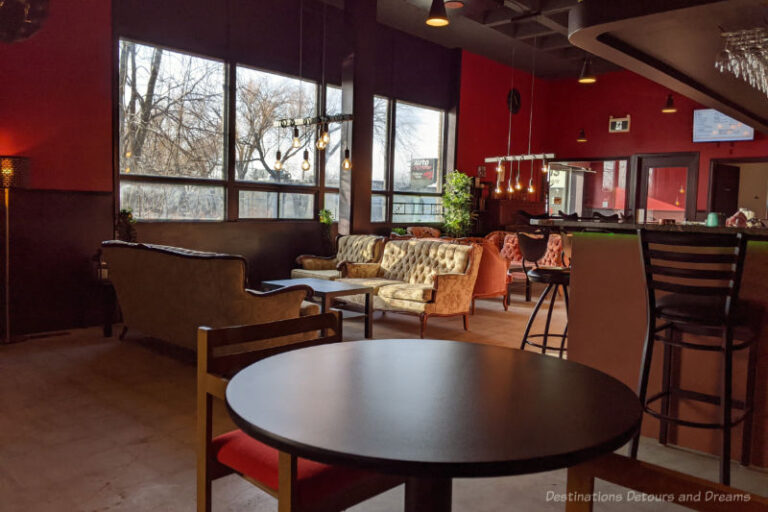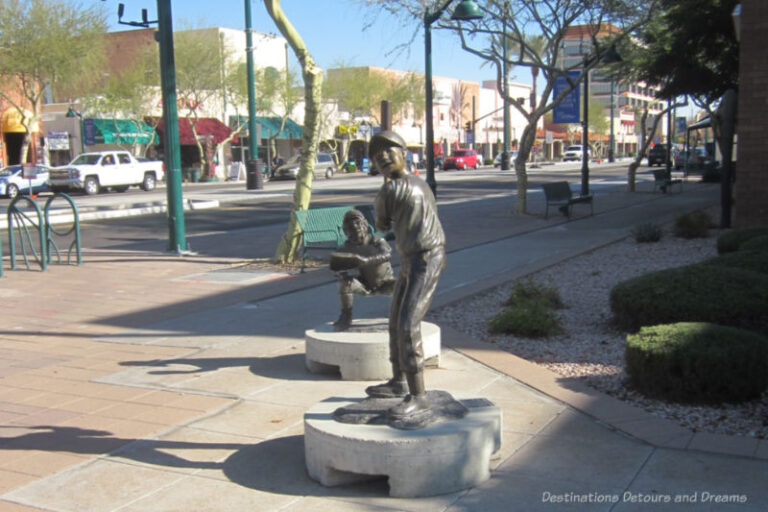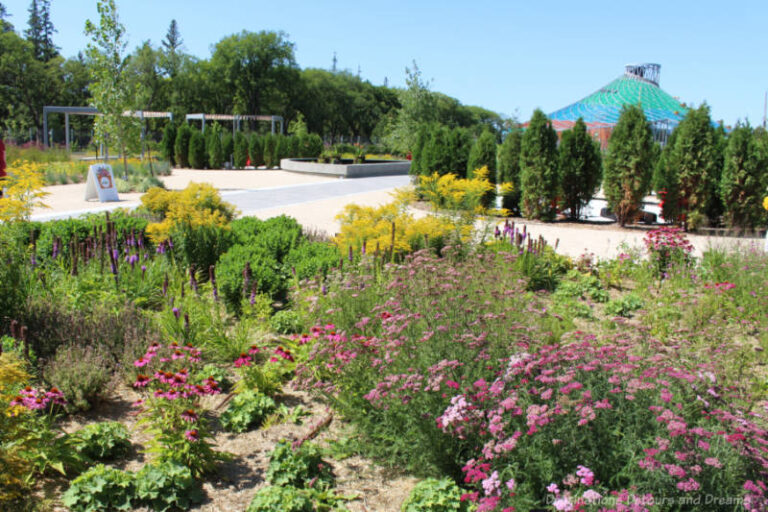The Forks Walking Tour By Turtle Tours In Winnipeg
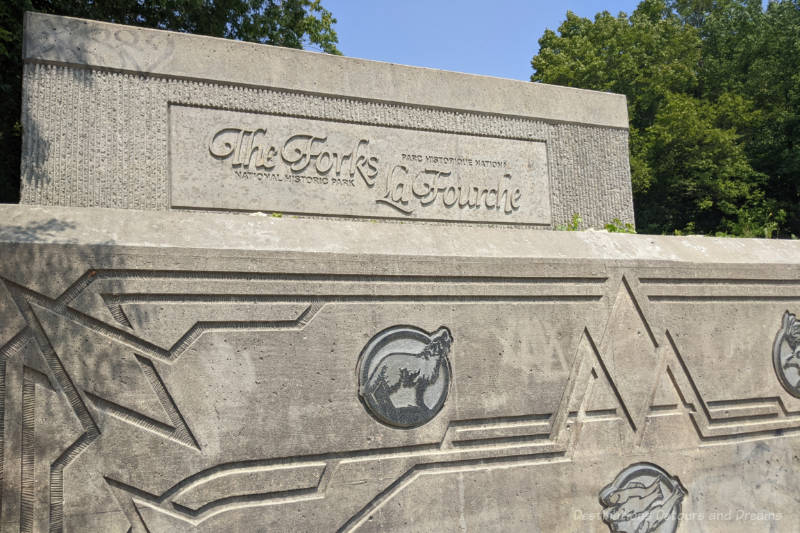
Review of Rivers, Trails, and Trade – Indigenous Walking Tour of The Forks in Winnipeg, Manitoba, Canada
The Forks in Winnipeg, Manitoba, Canada has been a meeting place for over 6,000 years and continues to be one today. The place is a top attraction in the city for locals and tourists alike. Located at the junction of the Red and Assiniboine Rivers, it contains shops, restaurants, outdoor spaces, entertainment venues, public art, historical landmarks, and other unique attractions. It is host to many events. I’ve written about the site in another post Meet Me at The Forks in Winnipeg.
In the summer of 2025 Turtle Tours, a company offering authentic Indigenous tours and experiences, began offering a 45-minute story-telling tour of The Forks. I took the tour a few weeks after it began.
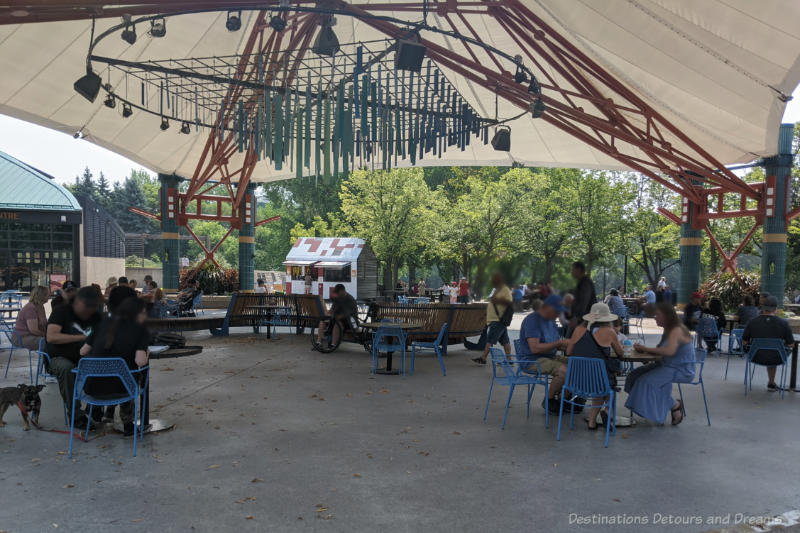
The tour first went through the Canopy area at the heart of The Forks and then took us through most of the grounds. The guide provided an overview of what you’ll find at the site while sharing bits of historical background and other interesting facts. The tour has a focus on Indigenous history, which is fitting given the First Nations peoples’ connection to this site for thousands of years, but it also includes other history and information about the various attractions at The Forks.
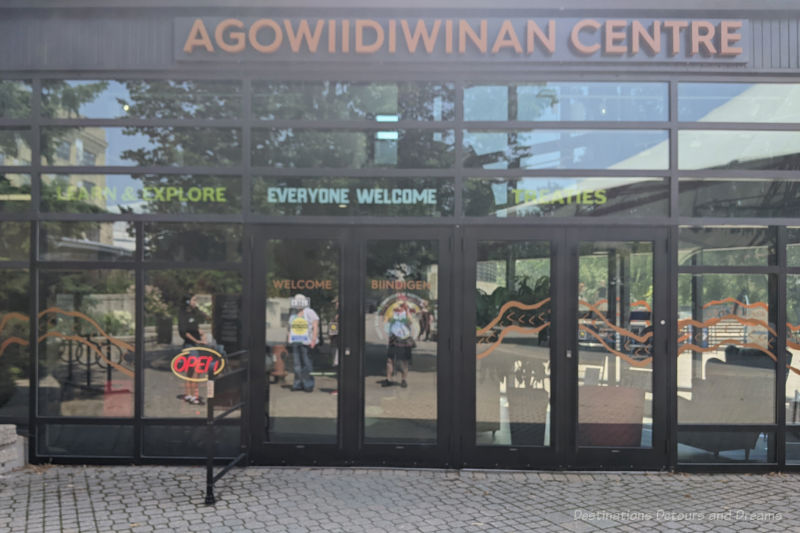
The Forks is located on Treaty 1 territory. One of the first stops on the tour was in front of the Agowiidiwan Centre, where interactive displays teach about the treaties that provided and still provide the nation-to-nation agreements that are the framework for sharing the land Indigenous peoples traditionally occupied. The guide spoke briefly about the treaties, but we did not go into the centre as part of this tour. I recommend people take time to visit the centre after the tour. It is very informative. You can read in my post Canada Treaty Display at The Forks in Winnipeg.
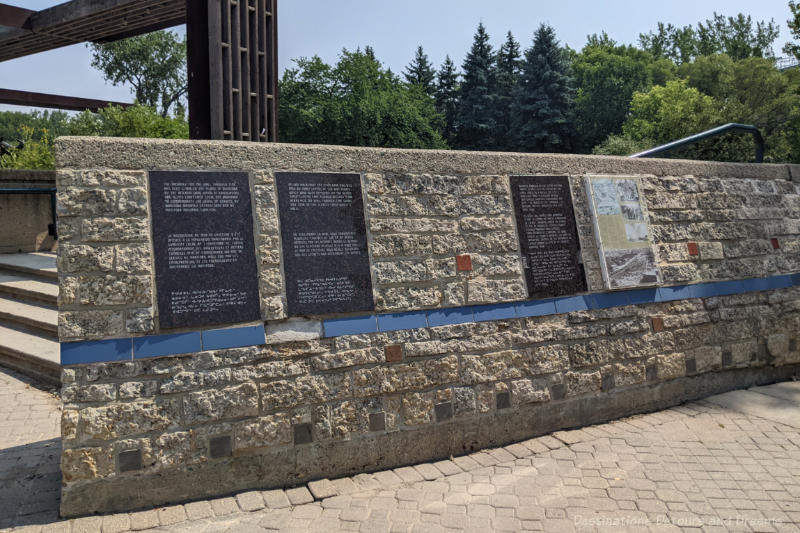
The Forks’ Wall Through Time forms a graphic retelling of historic events that took place at The Forks throughout its 6,000-year history, from trading between First Nations groups to the fur trade and early European-style settlement to the early steamboat and railroad era to modern day. Information is in English, French, and Cree.
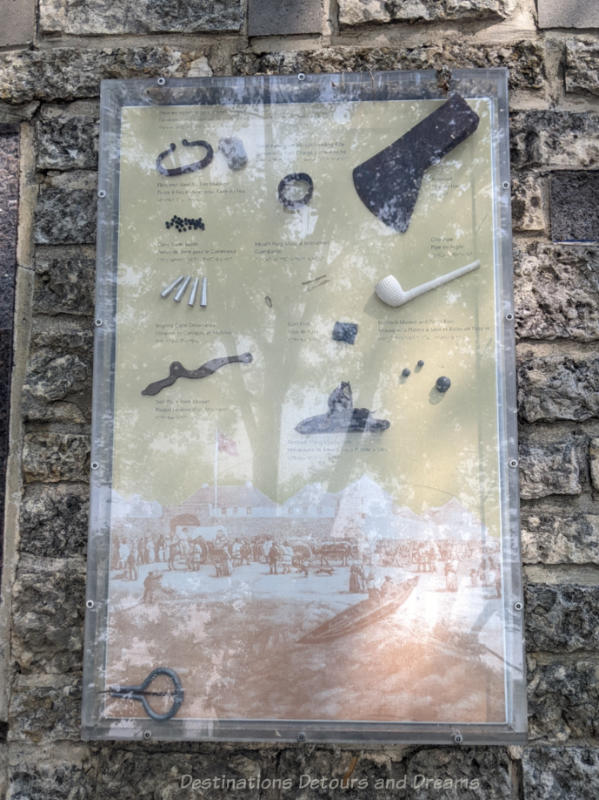
The guide highlighted a number of things along the wall and provided bits of history detail, but we did not take the time to read each panel. You could go back on your own after the tour to do so if you wanted to read in more depth. I should note that the tour guide was open to slowing down at spots where the group wanted to look at things more closely.
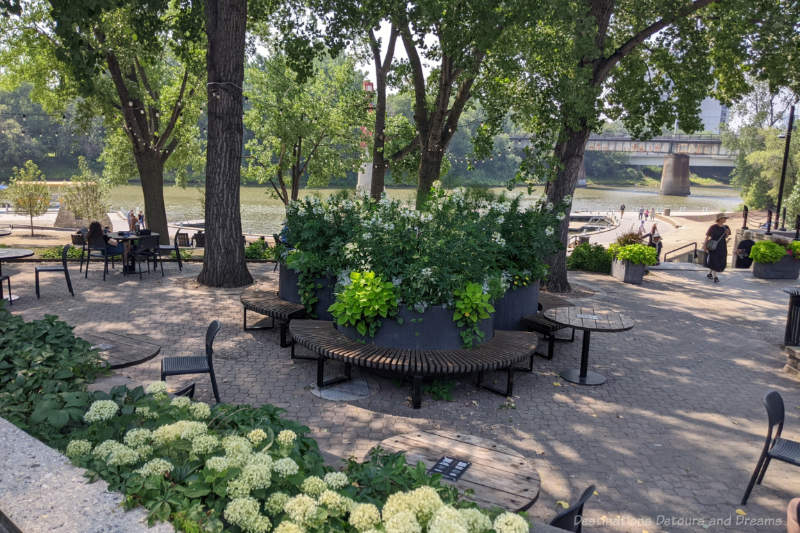
The area of The Forks along the Assiniboine River is now a beautiful terraced seating area with boat docks into the river. Our guide asked us to look at this and imagine the space years ago lined with tepees.
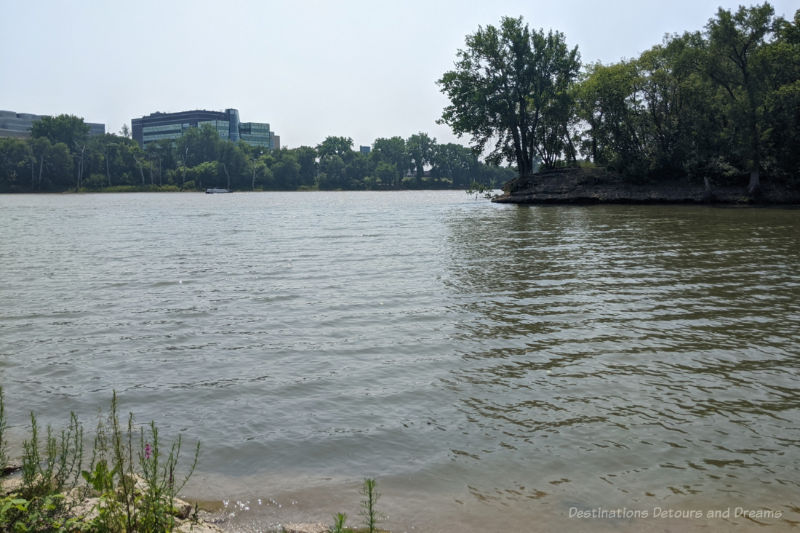
As we passed the point where the north-flowing Red River and the eastward-flowing Assiniboine River meet, our guide said that on calm days she could see a line in the water at that junction. The day of our tour was not that calm.
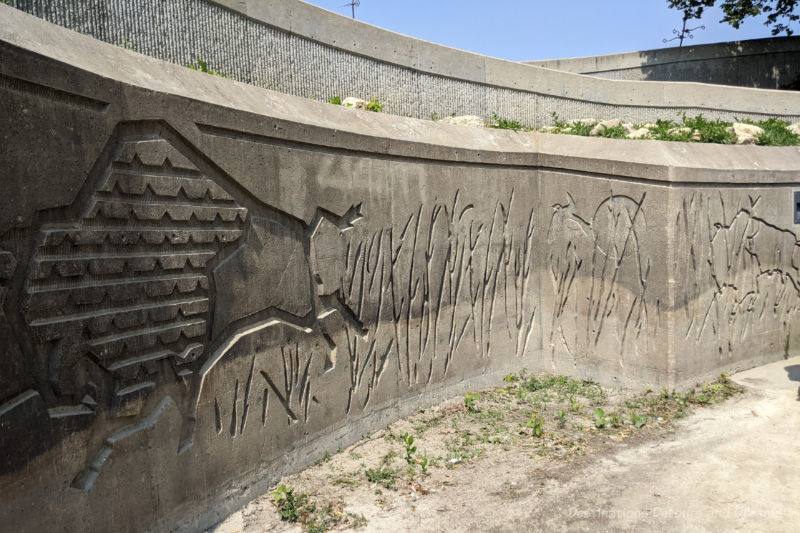
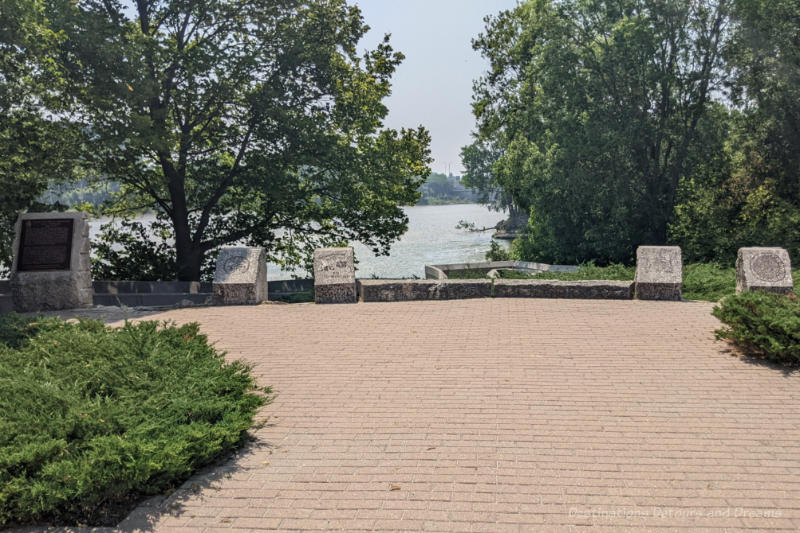
The Forks National Historic Site, a riverside park operated by Parks Canada, contains markers with information about the site’s history.
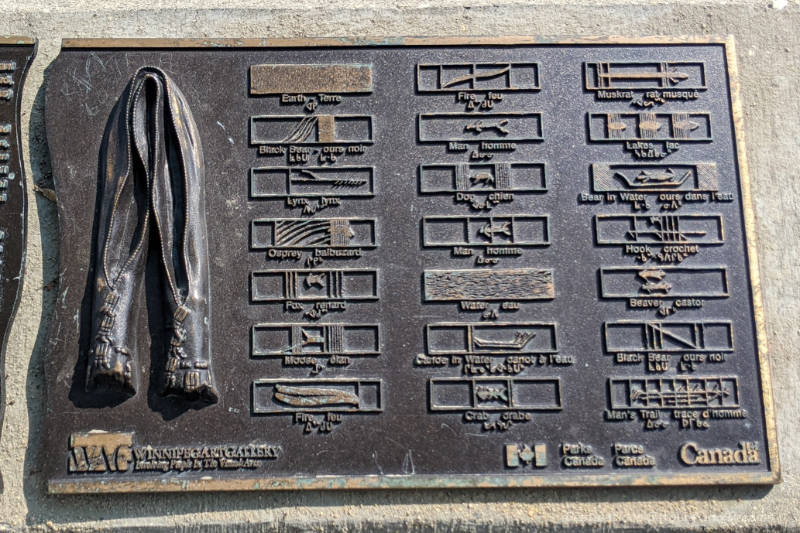
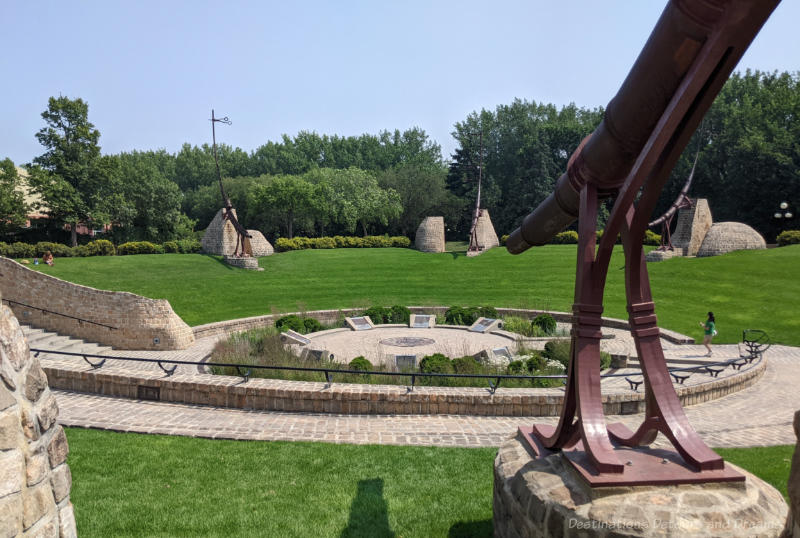
The Oodena Celebration Circle is a natural shallow amphitheatre, sundial, and natural observatory. Many celebrations are held here. The ceremonial fire pit in the centre is covered when there are no celebrations in progress so that the fire never goes out (a fact I learned on this tour).
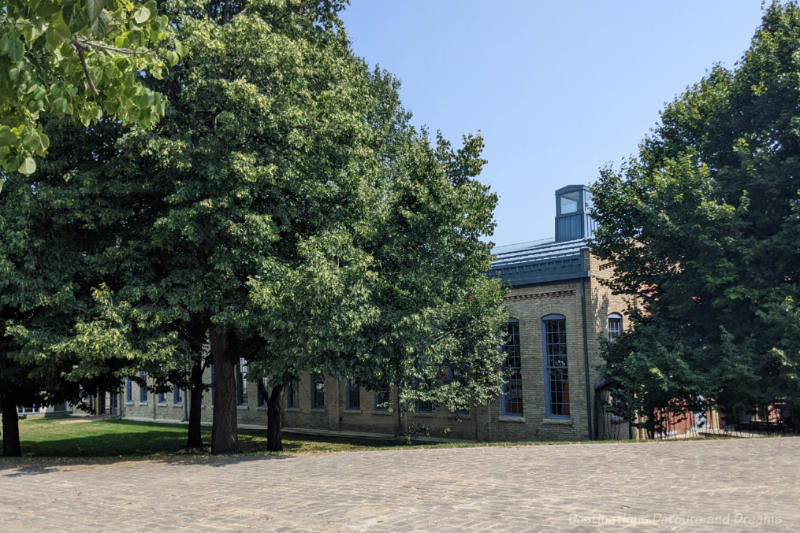
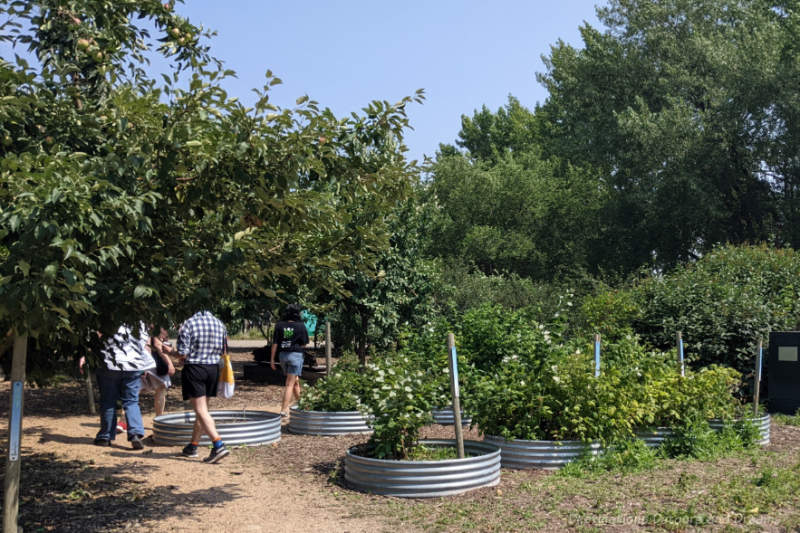
We walked past the Prairie Garden featuring native tall prairie grasses and wildflowers. I was familiar with that garden and had seen it many times, but I hadn’t been aware that The Forks also had a public orchard with fruit trees and shrubs. Everything in the orchard is available for locals and visitors to pick. Nothing was ready for the picking when we walked through, although the raspberry bushes looked as if they would have more fruit soon.
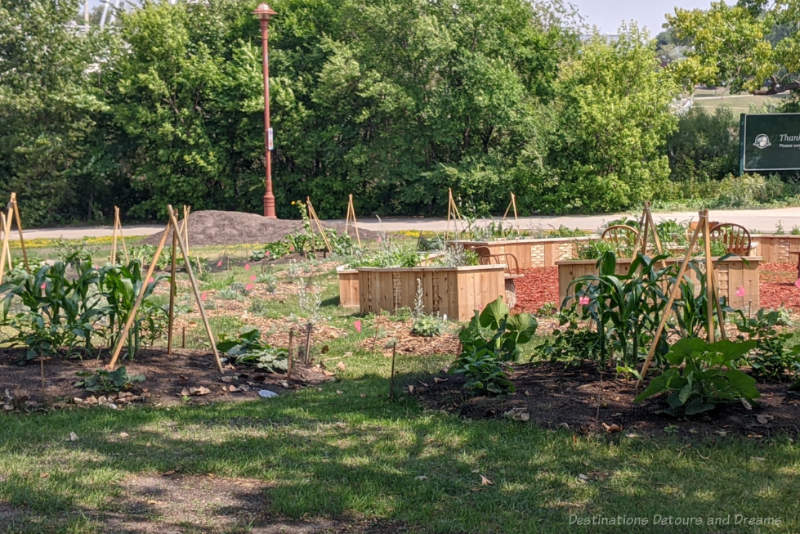
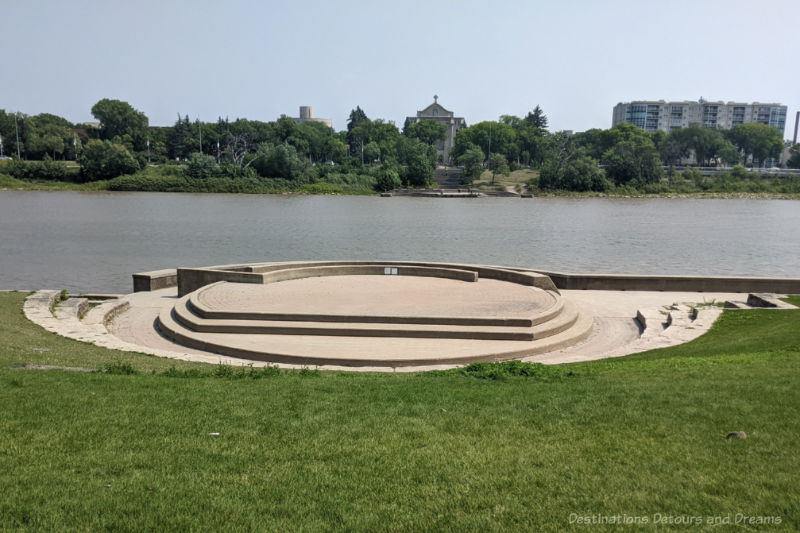
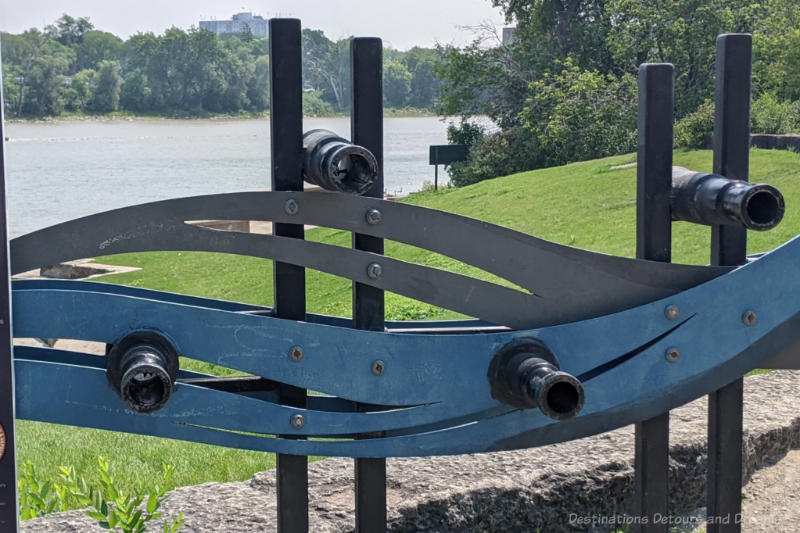
Eye pieces with images of the types of river craft used through the ages—canoes, York boats, steamboats, motor boats—look out over the river and allow you to visualize the river years ago.
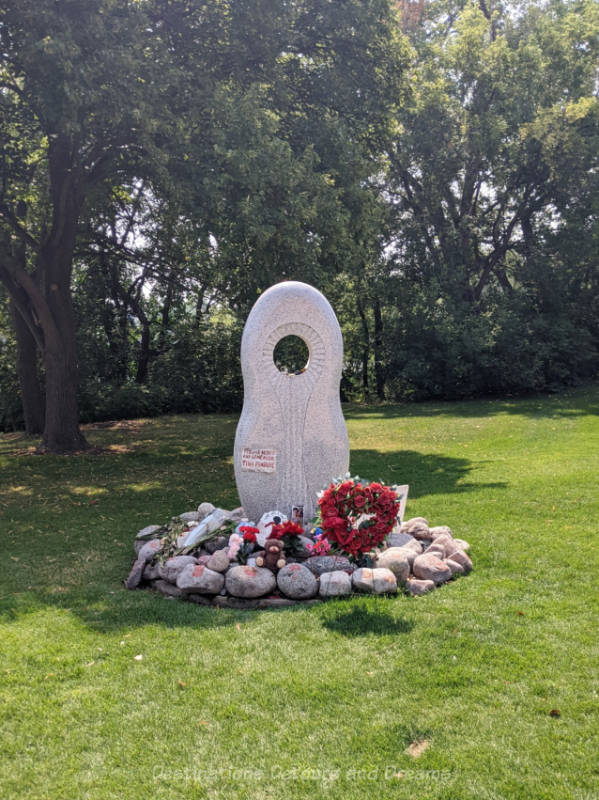

We had moments of silences at a couple of memorials: the memorial for Murdered and Missing Indigenous Women and Girls and the memorial for residential school survivors.
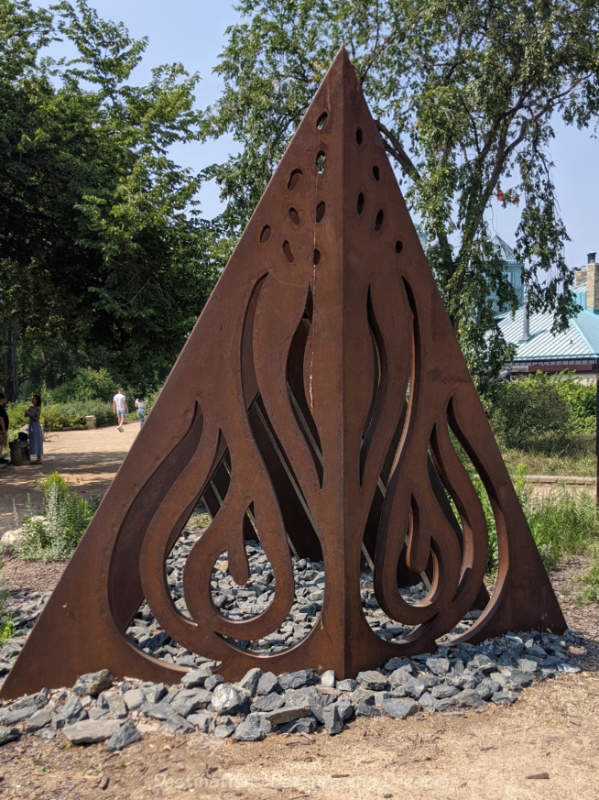
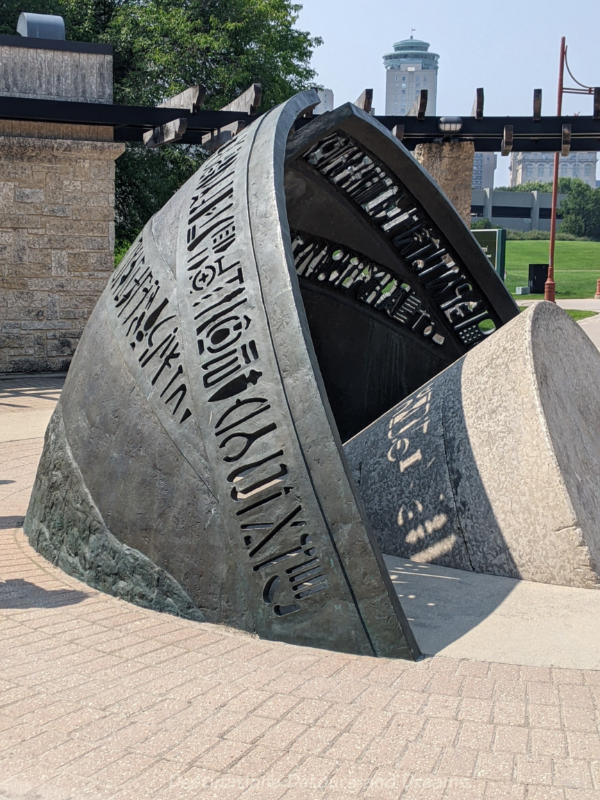
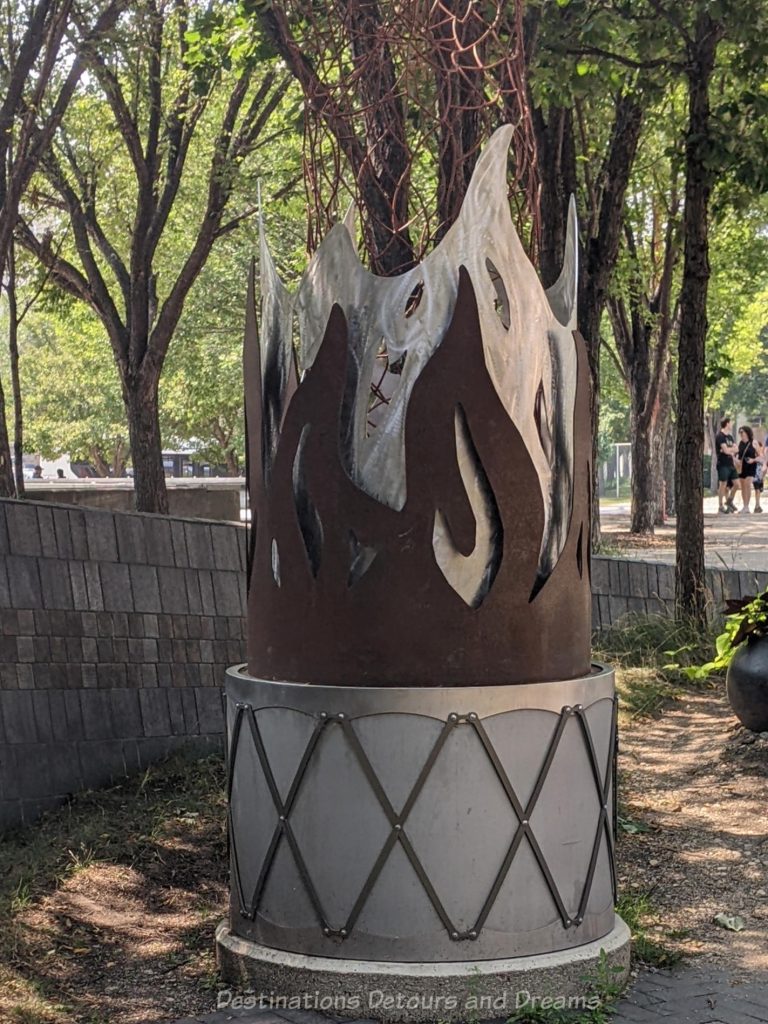
We also went past the playground, the edge of the Canadian Museum for Human Rights with the natural grasses alongside it, the world-class skateboard park, and the outdoor stage.
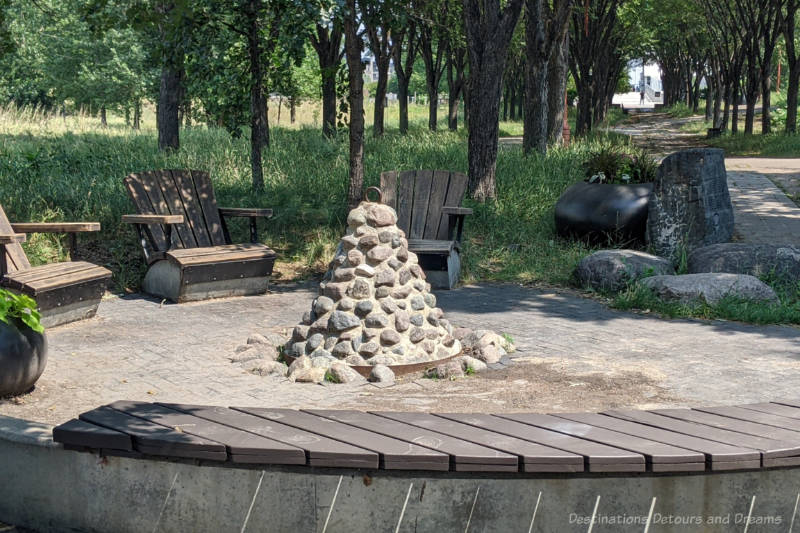
The tour provides a good overview of The Forks and its history. It is a good introduction to all that currently exists at The Forks. You will likely want to spend more time there after the tour. For those already familiar with The Forks, the tour can offer new insights and perhaps some information you were unaware of.
While you could walk and discover much of The Forks on your own, reading The Forks signage about historical elements and art pieces along the way, the tour provides additional information and ensures you don’t miss something of interest. I’ve taken other tours of The Forks and explored it and its history on my own. Still, I learned a few new things on the tour.
Turtle Tours is located on the main floor of the Forks Market building, which was once horse stables and a hayloft in the height of the railway days and now contains a number of unique shops and food and drink outlets. They also offer a Taste of Survival tour, an Indigenous food-focused cultural tour. At the current time that tour is only available for group bookings of a minimum of 15 people. I have not yet had opportunity to take that tour.
PIN IT
